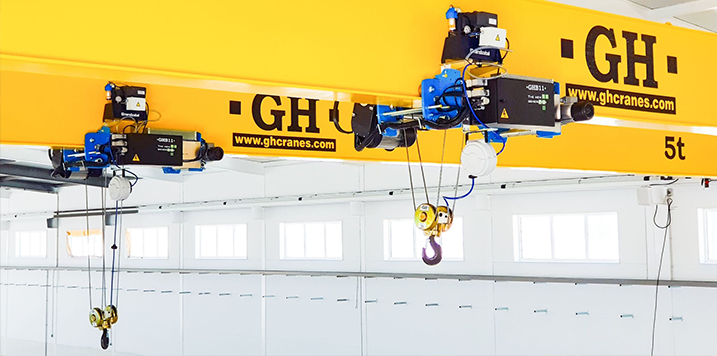 09 November, 2022
09 November, 2022Bridge or gantry cranes are used to lift materials and loads and transport them in vertical and horizontal suspension. They are generally implemented inside and outside factories and industrial bays and have multiple uses. These cranes are generally driven by an electrical system in which the user can guide and move the crane from the ground by remote control (move the crane, tilt the cart and raise and lower the load).
The goal of the SMART CRANE project has been to take key strategic action to design and develop an advanced artificial vision and intelligence solution applied to the movement of parts by gantry crane in industrial plants, enabling productivity to be optimised and human and material accidents to be prevented, among other aims.
By projecting the geometry of the suspended load, the operative can guide it and position it in the space, either on the ground or stacked on other components, which is a huge advancement in the realm of workplace safety in industrial settings. In addition, the system created is autonomous, which means that it minimises human errors relating to load handling and prevents possible risks, as well as modernising and adapting the current fleet of cranes to comply with Industry 4.0 criteria or parameters.
The most disruptive aspects of the project have focused on:
The joint venture, formed by partners Delfin Tubes, Elinor, GH Cranes, Táctica Tic, AFM Cluster and MetaIndustry4, has developed an artificial vision solution capable of transforming gantry cranes operating in any kind of industrial setting with a high volume of movement by staff and goods into intelligent systems with predictive capabilities. A prototype has been created with huge application potential, capable of detecting the movement of persons at a certain distance from the raised load on the gantry crane. Technology company Táctica Tic designed and developed the solution, the training system and the platform alongside Delfin Tubes, an industrial business which was also used as the case study. Also participating in the joint venture was GH Cranes, a benchmark company in the manufacturing of this type of equipment, which contributed its expert views on the implementation of technology; and the company Elinor, occupational risk prevention specialists.
This project also addresses the possibility of giving a second life to the gantry cranes already in place in the facilities of industrial companies, which is of great significance for industry overall since this type of machinery is extremely high cost and its depreciation period is also long.
The project has been carried out thanks to the co-funding of the Ministry of Industry, Tourism and Trade’s Innovative Corporate Group line under the Recovery, Transformation and Resilience Plan.
Subscribe to our newsletter. Just insert your e-mail and you will receive the latest news.